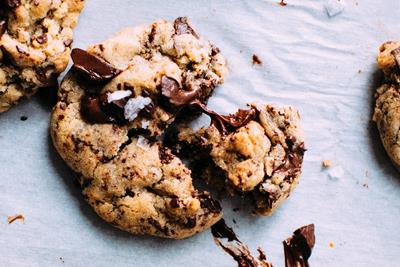
Saturday January 11, 2020
 420 Culture
420 Culture
Pot brownies have been a stoner favorite since the 60s. Nowadays, however, cannabis is stronger and our understanding of cannabis cooking has improved. In other words, today’s cannabis edibles are far better than your grandma’s were. Moreover, edibles are considered one of the safest ways to enjoy cannabis as they don’t involve burning or inhaling anything.
With the rise of cannabis culture, more people than ever are making edibles at home. Innovations in cannabis technology and the availability of new products have also made it far easier to add cannabis to your food. If you don’t have a lot of patience for complicated cooking to get your meds, we’ve got you covered. Read on to find out both about traditional cannabis cooking, and some easy shortcuts to add cannabis to virtually any food!
Ready-to-Infuse Products in the Cannabis Industry
Ah—the future. These days, if you live in a jurisdiction with medical or recreational cannabis, you might be able to purchase dissolvable cannabis. These are pre-made powders that dissolve instantly into food or drink. Ripple, a product by cannabis giant Stillwater Brands, is the most commonly found on dispensary shelves. Specific regions of the US also stock other dissolvable cannabis products like Le Herbe water-soluble distillates.
Distillates are Edible, Too
Another very versatile product your dispensary might carry is cannabis distillate. Distillates are highly pure concentrates of cannabinoids, most commonly THC. The purity of distillates makes them a great option for adding to food and drink; they won’t affect the flavor as much as lower strength concentrates which contain more terpenes and other flavors.
Follow the link to learn how to make distillate infused cannabis edibles.
Runnier distillates could be added directly to nearly any recipe, such as your favorite bake mix. However, others can still be pretty sticky. For this type of distillate, gently melt with a lighter to drip into the food.
Tinctures are Delicious and Loaded with Cannabinoids
A tincture is a cannabis product made by extracting cannabinoids into alcohol. It’s fairly cheap and easy to make tinctures at home if your local dispensary doesn’t already stock them. Take the strongest ethanol you can find. Ideally over 95% ethanol; something like Everclear 190 proof or rectified spirit is great. A tincture is generally made from flower, so you’ll need to decarb the flower before getting started. Decarboxylation is the process of altering cannabinoids with heat to make them bioactive before oral ingestion.
Add the flower and ethanol to a sealed container and continuously mix it for a couple of minutes before straining through a coffee filter. Some recommendations suggest soaking the cannabis in ethanol for weeks. See: the “Green Dragon” method. This might make sense if you’re using lower strength alcohol, but results in a lower quality tincture, as well. It’s called “Green Dragon” because this prolonged soaking pulls plant pigments, waxes, and lipids into the finished product.
That’s all it takes to remove the vast majority of the active ingredients from the flower while leaving behind the waxes and other undesirable compounds. The result is a pure, clean tincture that will be much less noticeable when added to food or drink.
How to Enjoy Adding Tinctures to Food
Tinctures are very versatile. However, the alcohol content is not a welcome addition to certain foods. Tinctures work great when added as a finishing touch to recipes like soups, stews, and pasta sauces. Add the tincture a few minutes before the end of cooking to allow the alcohol to evaporate off. Tinctures can also be added to drinks as well. Adding some a tincture to your morning coffee or tea puts a whole new spin on morning consumption; use cream or full fat milk for best results! Tinctures will also combine readily with cold drinks, beer, wine, and cocktails.
Cannabutter or Cannabis-Infused Oil
Cannabutter is the tried and true method of adding cannabis to food. Cannabutter or cannabis-infused oil can be made using nearly any type of cannabis including extracts and hash.
Tips for Making Cannabutter or Oil
When you’re decarboxylated cannabis is ready, add it to a slow cooker with butter or olive oil and heat the mixture, stirring occasionally. The longer you cook the product and the lower temperature at which it’s cooked will improve the outcome of the extraction. Some people recommend between 8 and 24 hours, although you can make effective cannabutter with less time as well.

Moreover, the greater your ration of cannabis to oil or butter, the stronger your end product will be.
After your mixture has low cooked and cooled, you’ll need to strain the mixture through a cheesecloth to remove excess plant material. This will help to ensure an enjoyable product which will stay fresh as long as possible.
Key Takeaways
At the end of the day, there are quite a few options for people looking to add cannabis to their food and have an enjoyable edibles experience. Finding what works best for your personal needs will take a little trial and error, however, once you know what is most effective for your body you can easily replicate that process. For anyone who wants to infuse their foods with minimal effort, try ready-to-use options you can buy from the dispensary, like Ripple. If you like to bake, then maybe try your hand at a batch of cannabutter. Whatever you do, remember to start slow and make sure you don’t get too high.
Do you have a favorite way to enjoy cannabis in food or drink? Tell us about it in the comment section!







